Experiencing Dublin's Cultural Highlights
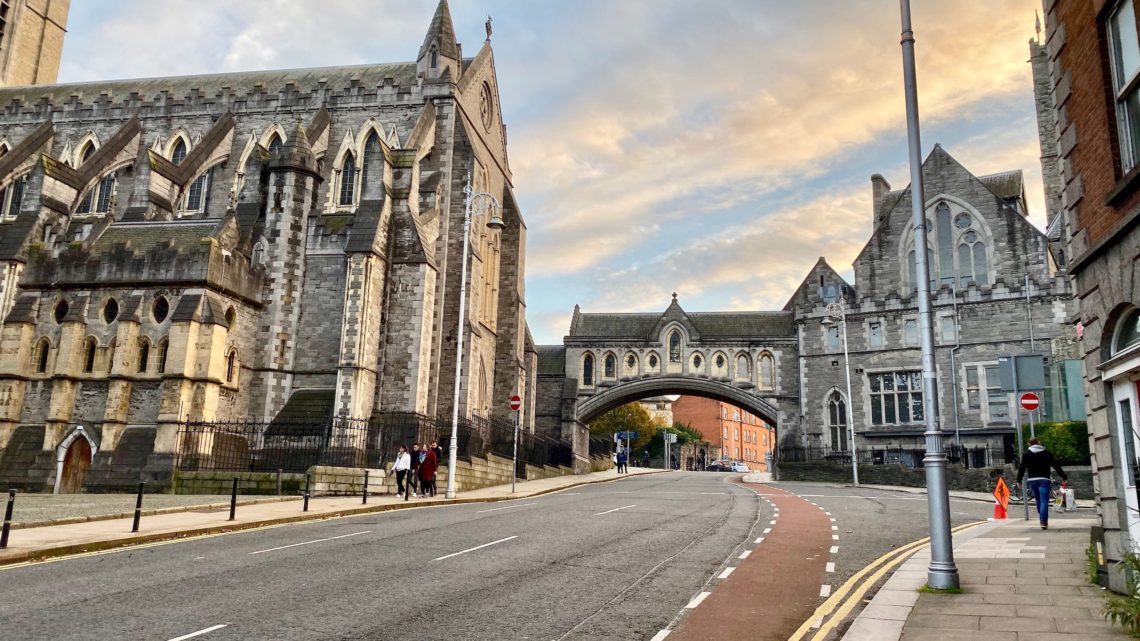
Dublin is home to many important sites that relate to Ireland’s rich culture and strong national pride. Throughout the city, visitors can find exquisite architectural landmarks, grand promenades, and an array of pubs, breweries, and distilleries. During my visit, I got the chance to explore a prestigious university, admire a famous church, taste Guinness and Jameson in their birthplace, and hear traditional Irish music at several lively pubs.
O’Connell and Grafton Streets
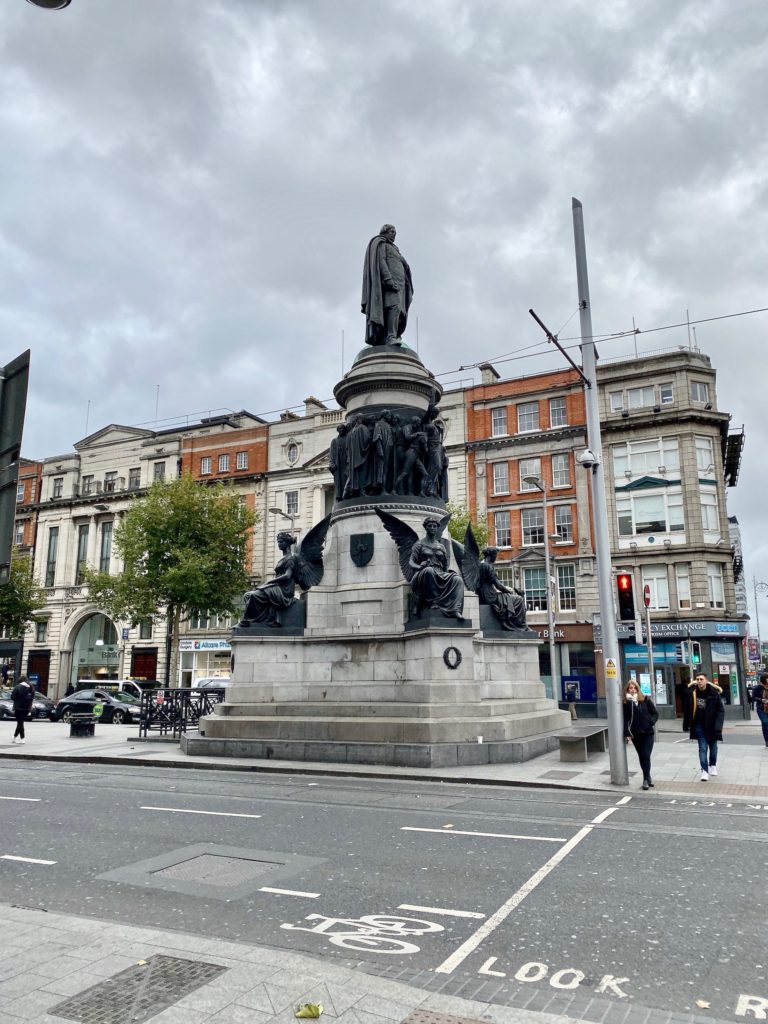
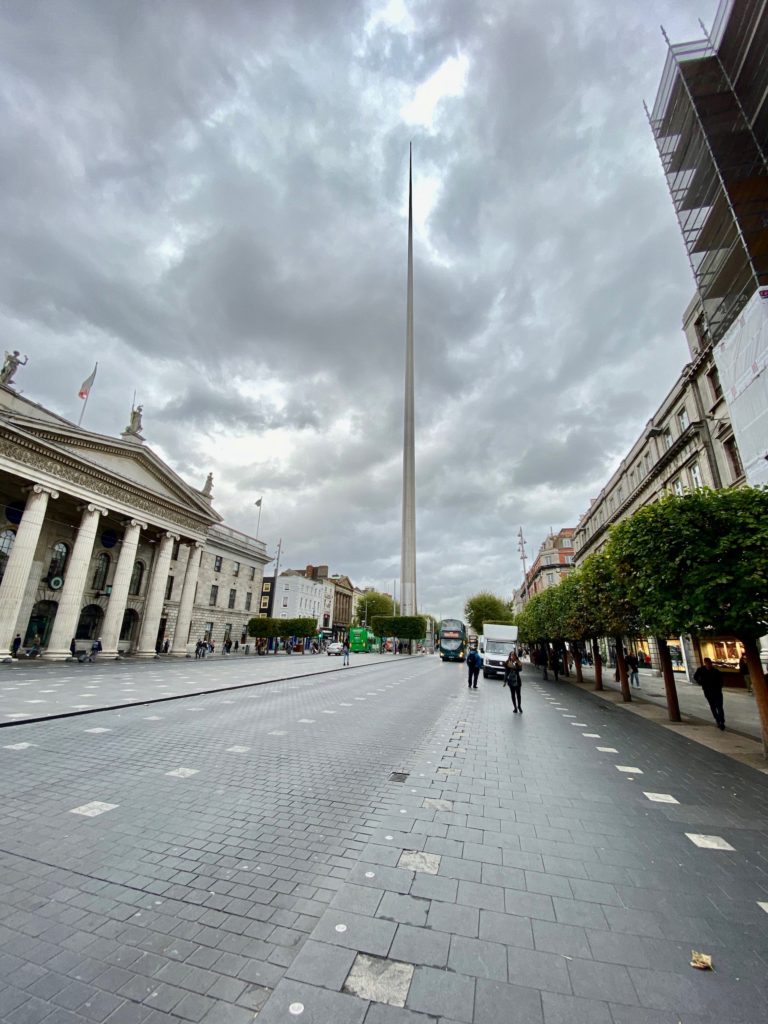
During my walking tour of Dublin, I thoroughly explored the Temple Bar area and other landmarks south of the River Liffey. However, I had yet to walk on two of Dublin’s most notable streets. The first of these is O’Connell Street, which is the city’s main thoroughfare. What started off as just a narrow road is now a wide promenade. A beautiful monument dedicated to Daniel O’Connell exists where the street meets the river. This large statue features the Irish nationalist himself, carved in bronze. Further down the street is a tall stainless steel spire. This 390-foot high monument was commissioned to bring a simple and elegant form of art to the city center. However, the monument is controversial, as many consider it unattractive and lacking in those qualities.
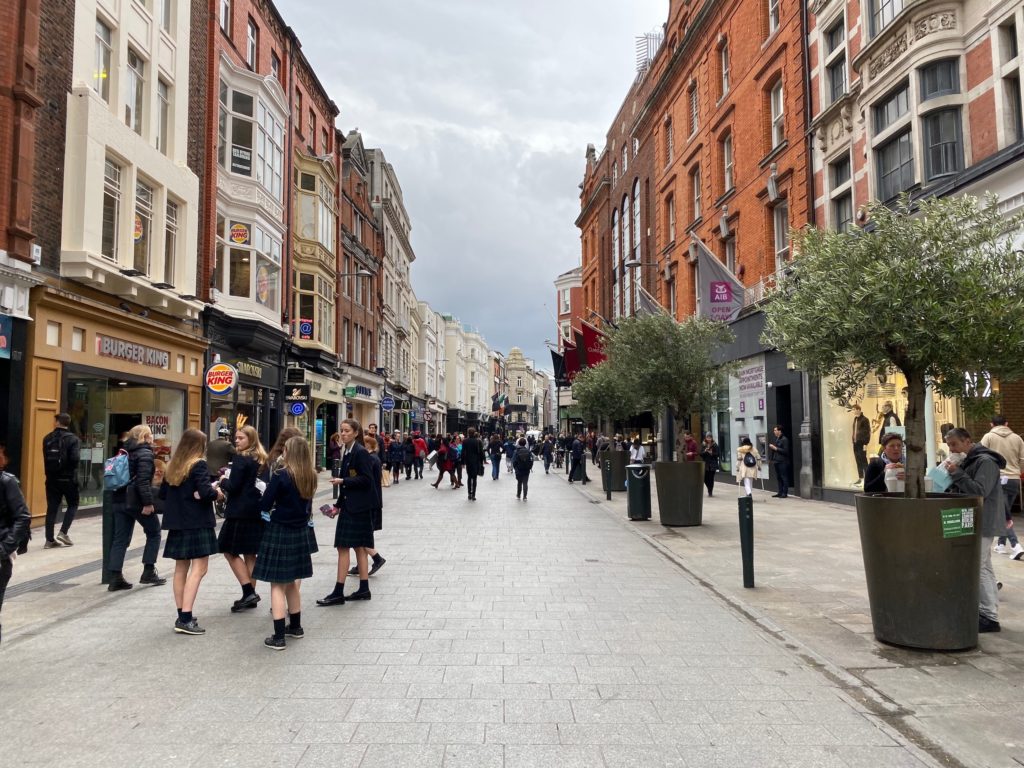
O’Connell Street is part of a larger thoroughfare that links Dublin’s northern neighborhoods with City Hall and Dublin Castle. Shortly after the O’Connell Bridge, a prominent pedestrian drag veers off. Grafton Street is one of the most important shopping areas in the city. Much like Strøget in Copenhagen, there are no cars on this street, just plenty of locals and tourists looking for a place to stroll and shop. The buildings of this street comprise an eclectic mix of architectural styles. Much like in other parts of the city, the main material is brick. Although the shopfronts of this street are larger with more display spaces, they still resemble the vernacular shopfronts across Ireland.
Trinity College
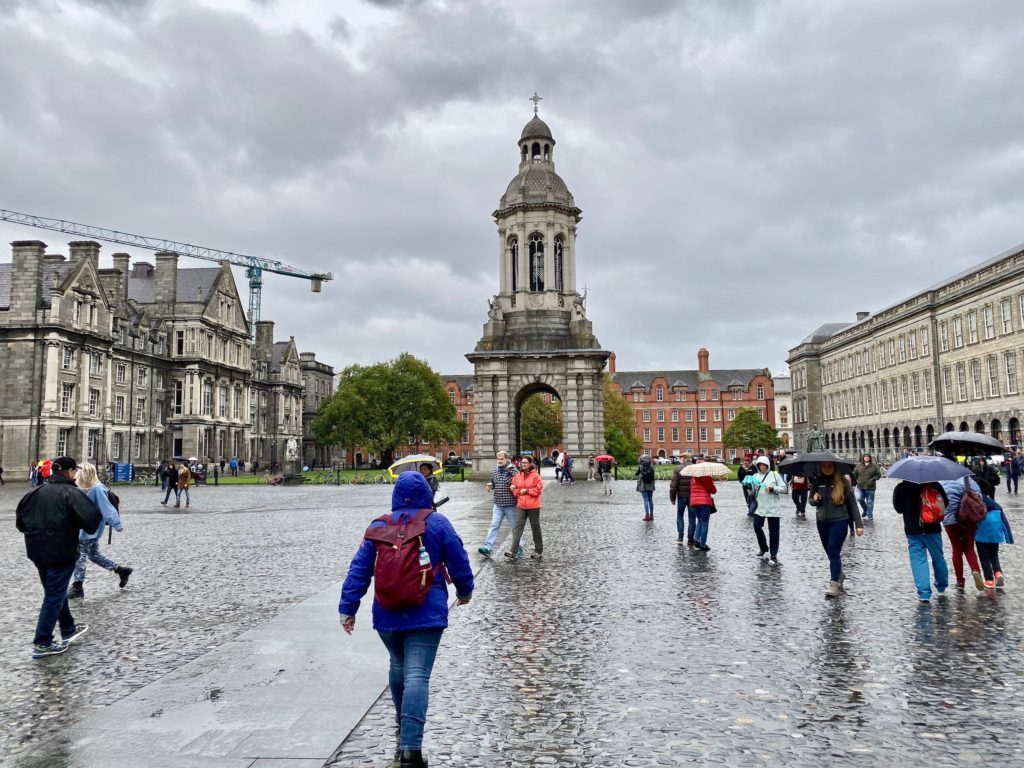
Grafton Street links St. Stephen’s Green with Ireland’s oldest university: Trinity College. The campus is a great spot to walk around, enjoy some green spaces, and marvel at the university’s beautiful architecture. I started my visit at Library Square, which includes some of the university’s most iconic sites. Just in front of me, I could see the Campanile: a gorgeous bell tower that marks the center of the square. Designed by Sir Charles Lanyon and Thomas Kirk, it is a hybrid of inspirations from a variety of architectural styles. The base has heavy rusticated Doric pilasters and arches on all sides. Above this base, the belfry features Corinthian columns and traceried windows, making it almost Gothic in appearance.
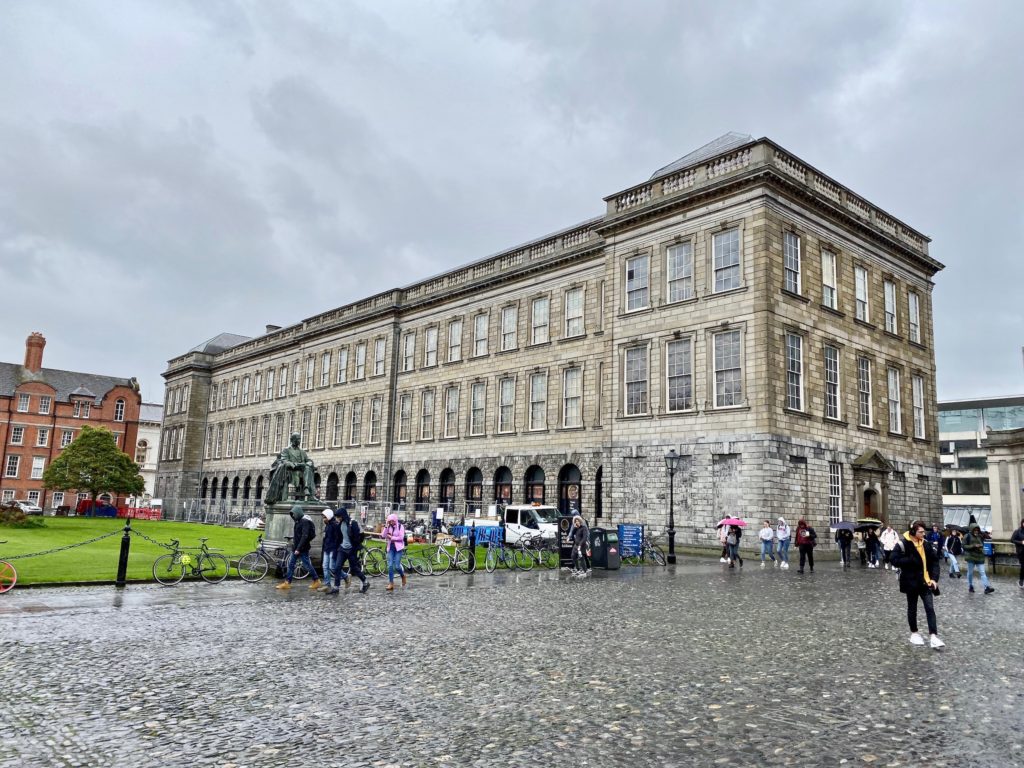
The Campanile is only the centerpiece of a beautiful quad. The open green space is surrounded by several other buildings, ranging in style from Neo-Gothic to Georgian. One of these buildings is arguably the most visited at the entire college: the Old Library. It was completed in 1732 by architect Thomas Burgh. On the outside, this library is a simple Georgian building with large linear windows. The primary material is stone, and ornamentation is limited to the delicate trimmings around the windows.
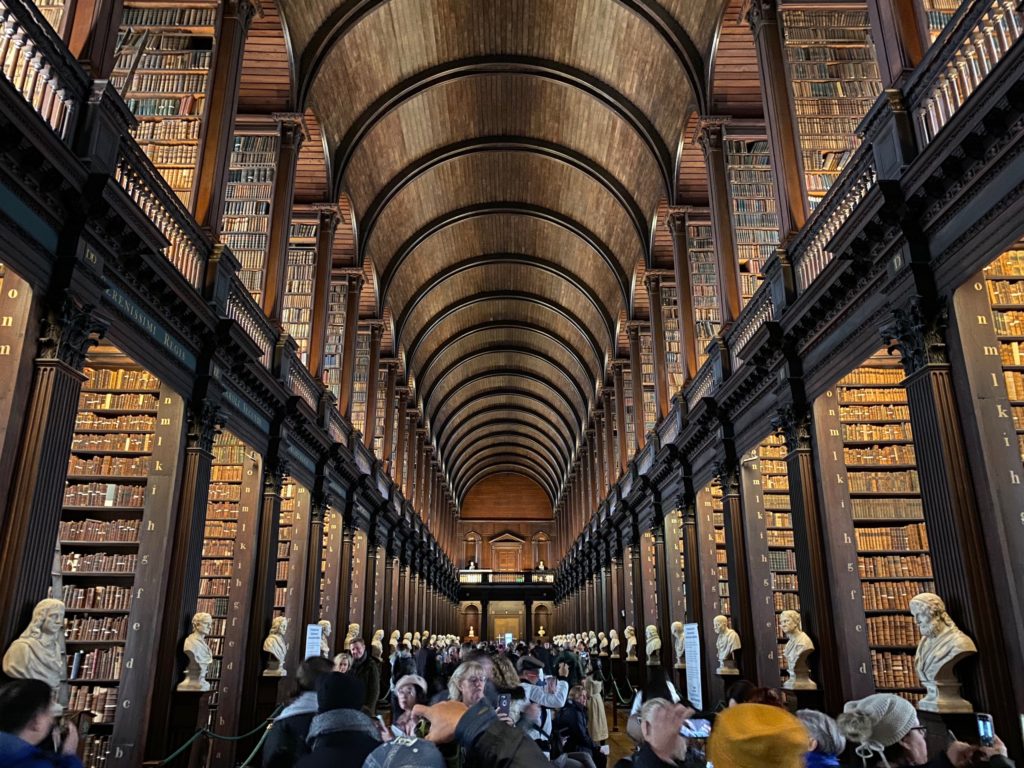
It was the library’s Long Room, however, that really blew me away. I had seen several amazing reading rooms throughout my travels, including the Boston Public Library and Bibliothèque Sainte-Geneviève in Paris. However, I had never seen one entirely made of wood. The two-story chamber houses 200,000 books under a barrel-vaulted ceiling supported by wooden columns. The columns, which are lined with Corinthian pilasters, form the shelving aisles. Although originally a single story, this room was expanded to two stories in the 1850s to increase shelving capacity.
The library is also famous for housing the Book of Kells: an illustrated Gospel that is sacred to the Irish. This exhibit, combined with the library’s beautiful architecture, is what attracts hundreds of thousands of visitors every year. Although the library is an architectural treat, it lacks the authenticity that I felt when I visited other libraries. Today, it functions much more like an exhibition and lacks any study spaces or actual patrons. In contrast, the other libraries I have visited are still used by the public for studying and research. Thus, they feel true to their original purpose. Despite this drawback, the Trinity College Library is still a must-see for any architect in Dublin.
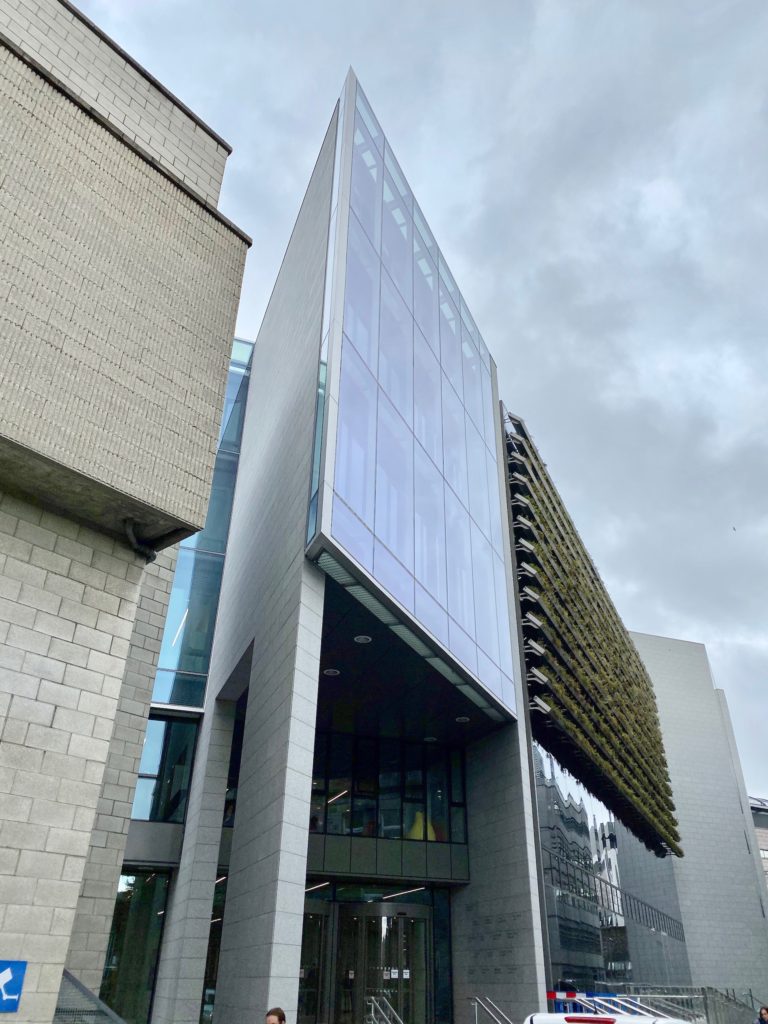
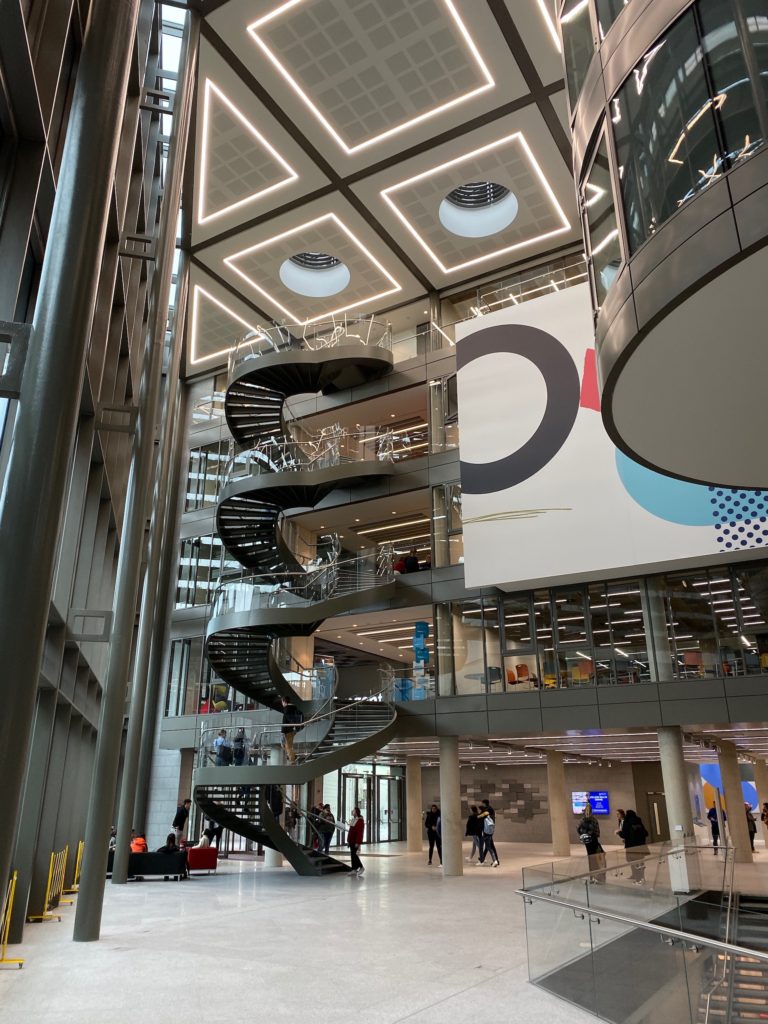
The campus also has some incredible modern buildings, including the brand new Business School, which opened in May 2019. Designed by Scott Tallon Walker Architects, it is one of the most sustainable buildings on campus and features the city’s largest living wall. I entered the building below a dramatic, triangular corner, reminiscent of some I.M. Pei buildings. Inside, a tall atrium provides plenty of natural light to all spaces and the acoustics are well thought out. I decided to hang around for a bit and observe the students at work, ready to choose their classes for the semester. I imagined what it must be like to study at one of Ireland’s most prestigious universities.
Christ Church Cathedral
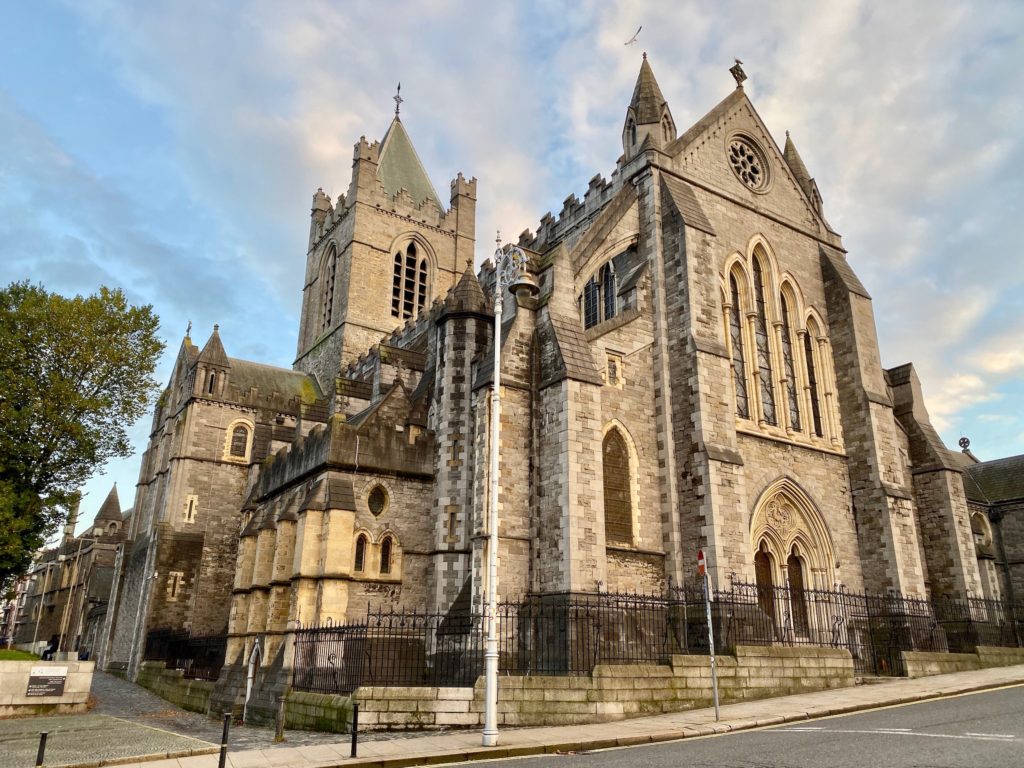
When I travel, I make it a point to visit churches, since they are often some of the most extravagant works of architecture within their respective cities. Dublin’s most iconic church is Christ Church Cathedral. I had previously passed by it on my walking tour of the city. This time, I came to look at it in more detail and marvel at its Gothic/Romanesque exterior. The flying buttresses and pointed arched windows are typical of Gothic cathedrals, whereas the heavy nature of the stone exterior harkens to its Romanesque inspiration.
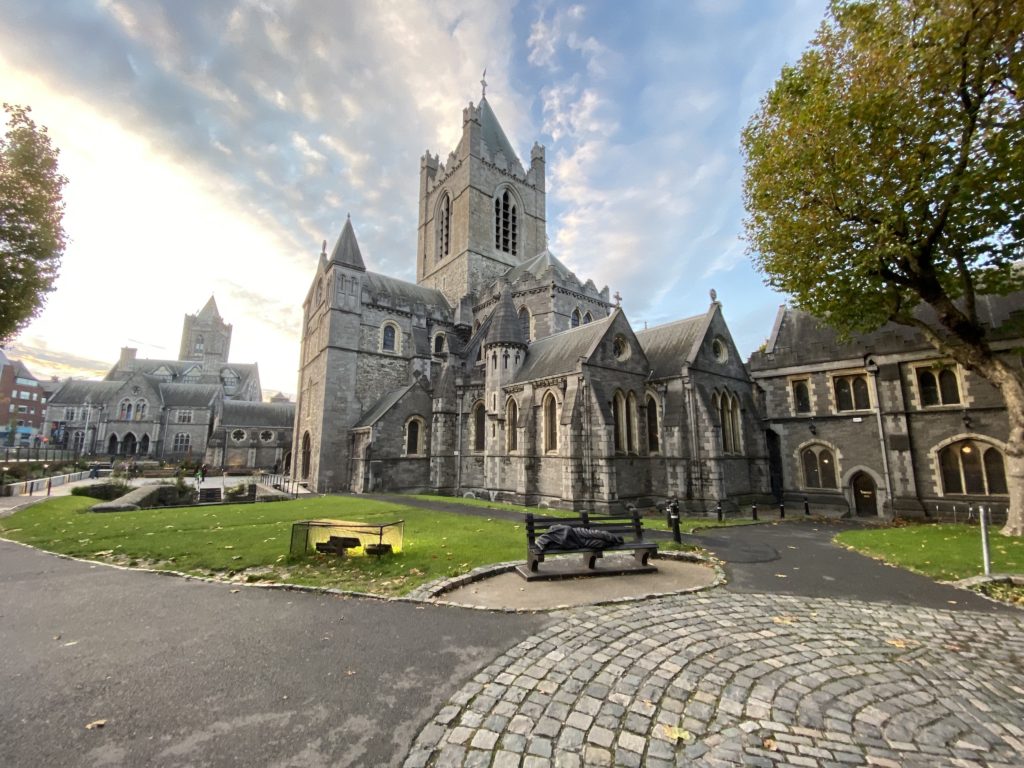
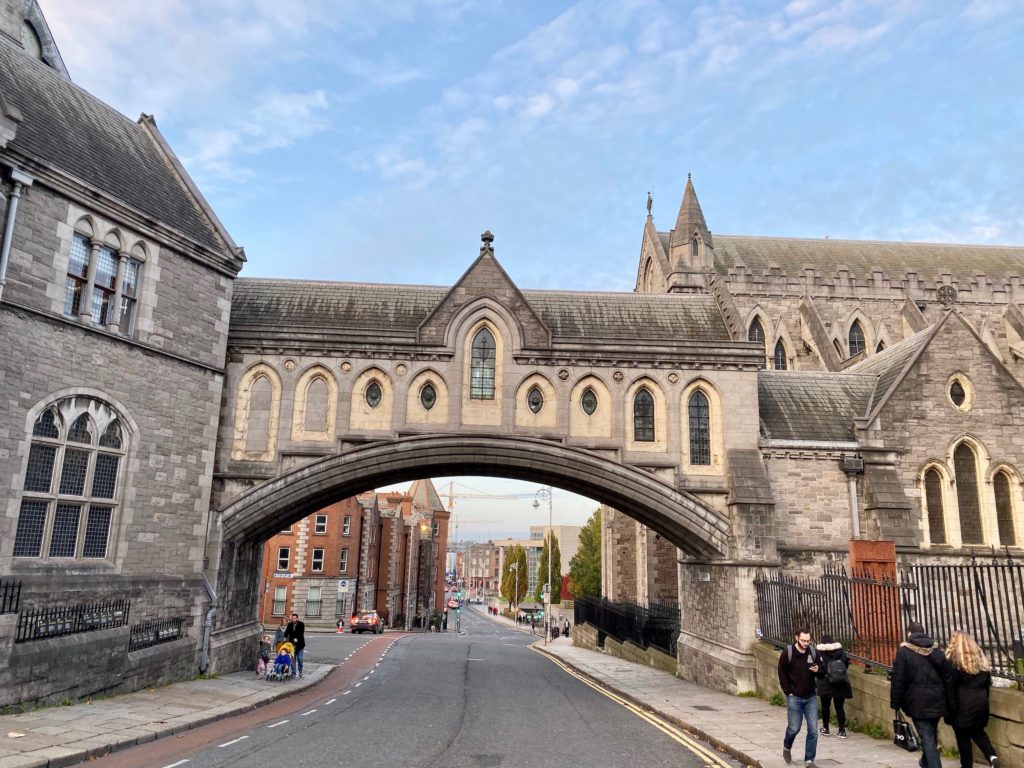
The eclectic mix of styles is the result of a major restoration project that took place during the 19th century in order to preserve the structure from decay. The church hired architect George Edmund Street to plan the restoration and bring the church back to its former glory. Today, the cathedral is popular with visitors, especially for its crypt, which houses many treasures that were important to the church throughout its life. Unfortunately, the building was closed when I arrived, so I was unable to explore any of the
Jameson Distillery
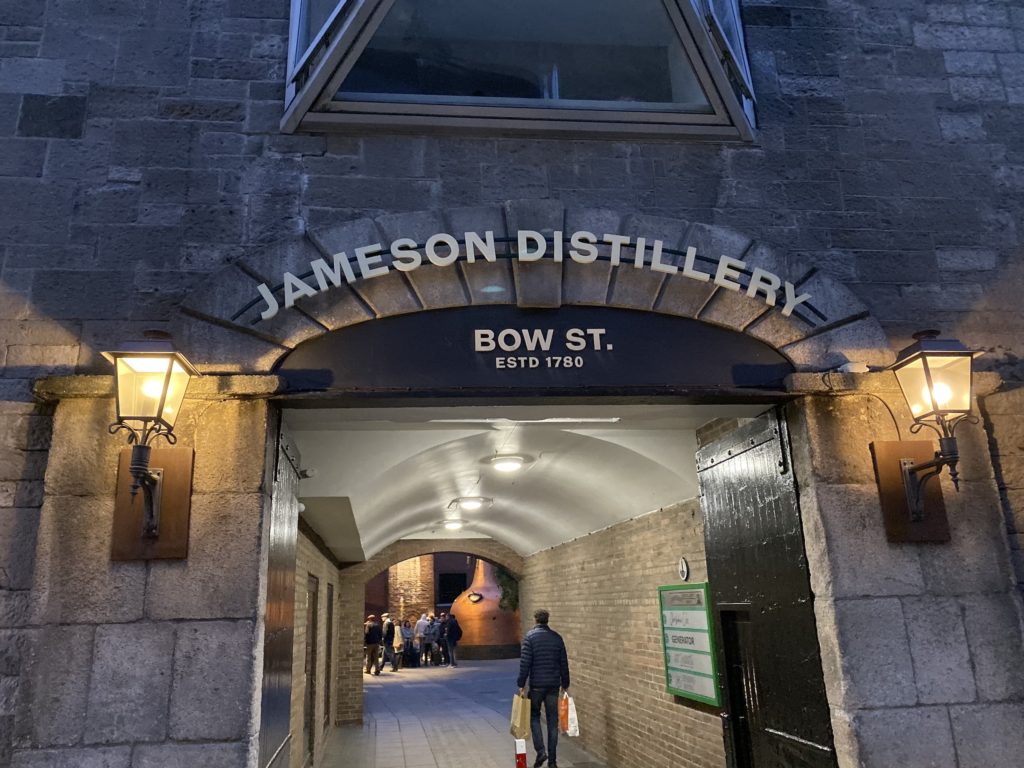
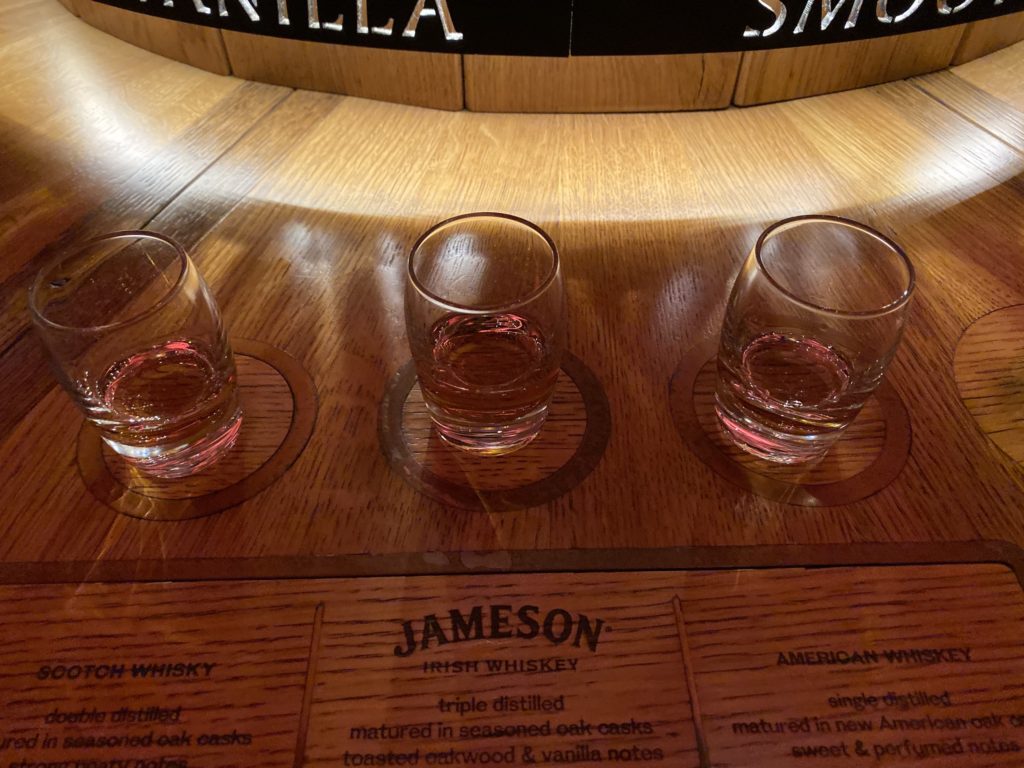
Ireland is a country that is known for its beer and whiskey, and Dublin is home to several breweries and distilleries. I decided to visit the most famous distillery in the city: the Jameson Distillery on Bow Street. Within this stone building, I went on a guided tour through the history of Jameson and Irish whiskey. I sampled the three major types of the drink: American whiskey, Scotch whisky, and Irish whiskey. While the first two whiskies are only distilled twice, Irish whiskey is always triple distilled, giving it a much smoother taste. Out of the three that I sampled, I preferred the Irish whiskey by far.
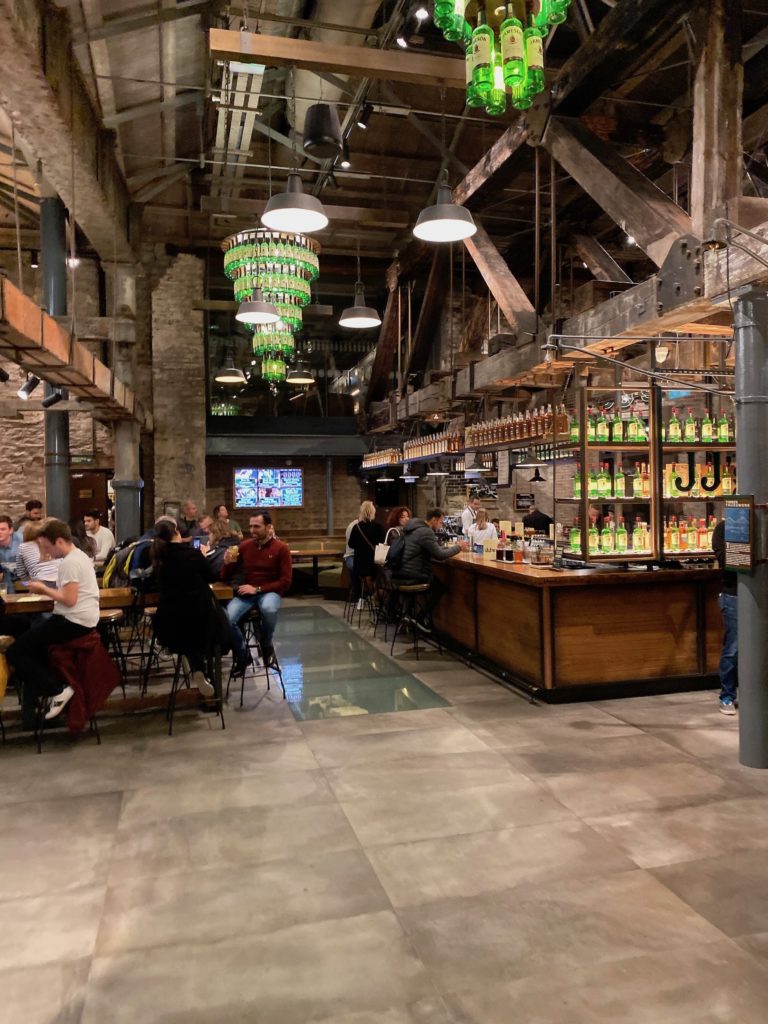
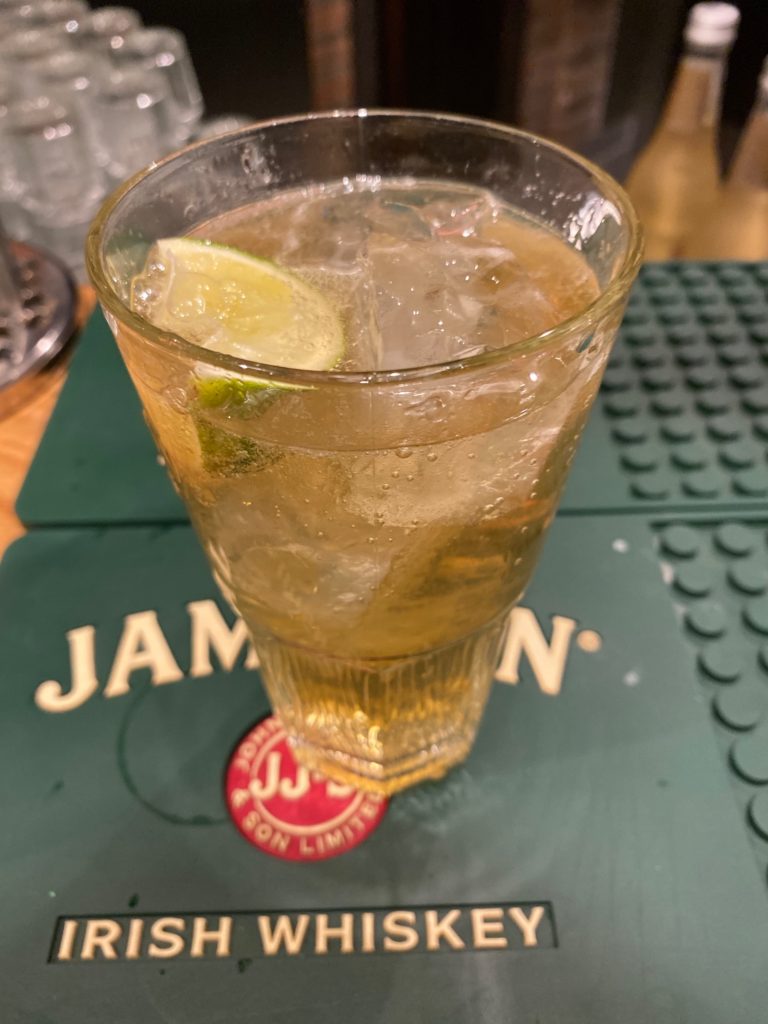
The distillery also has a bar area where visitors can sample Jameson’s long variety of whiskeys. I tried the classic Jameson in a ginger & lime cocktail, which was included as part of my entrance ticket to the distillery. I also sampled a rare “Distillery Edition,” which is only available at the distillery itself. Overall, it was
Guinness Storehouse
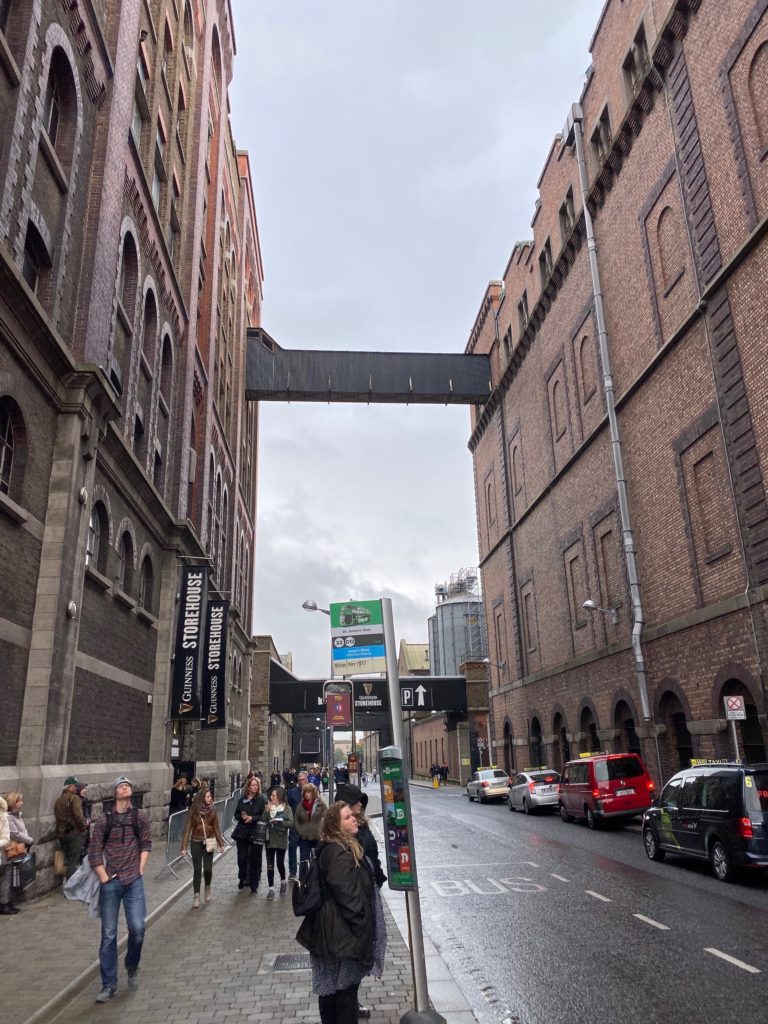
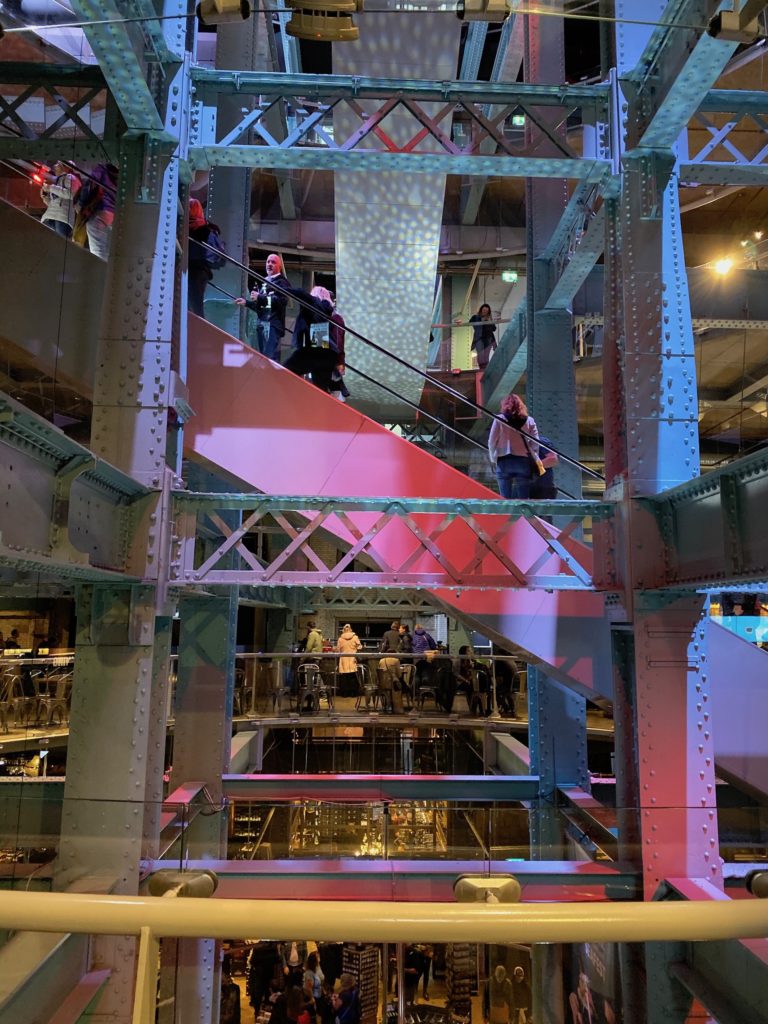
Ireland is also famous for its beer. The best selling variety is Guinness: a dark stout. While I always found it strong and bitter, I learned to appreciate it more when I toured the Guinness Storehouse brewing facility. I grouped up with my friend Fee from the hostel and our friend Lisa from France, who we met at a pub. We arrived at the large early 20th-century warehouse, which is housed in Ireland’s first steel-framed building. The main brick façades are constructed in the Chicago School style and feature large windows, some capped with arches. During the late 1990s, the warehouse was renovated and converted into the tourist attraction found today. The inside features a large steel and glass atrium in the shape of a Guinness pint. This atrium houses the elevators and escalators that bring visitors through the brewery.
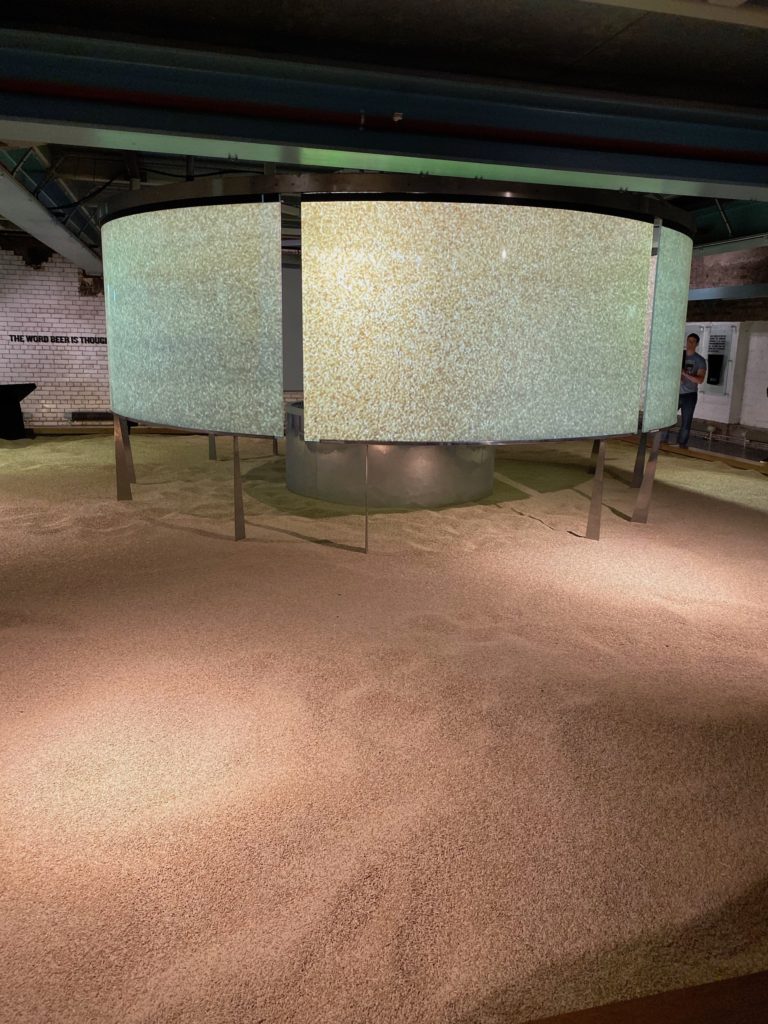
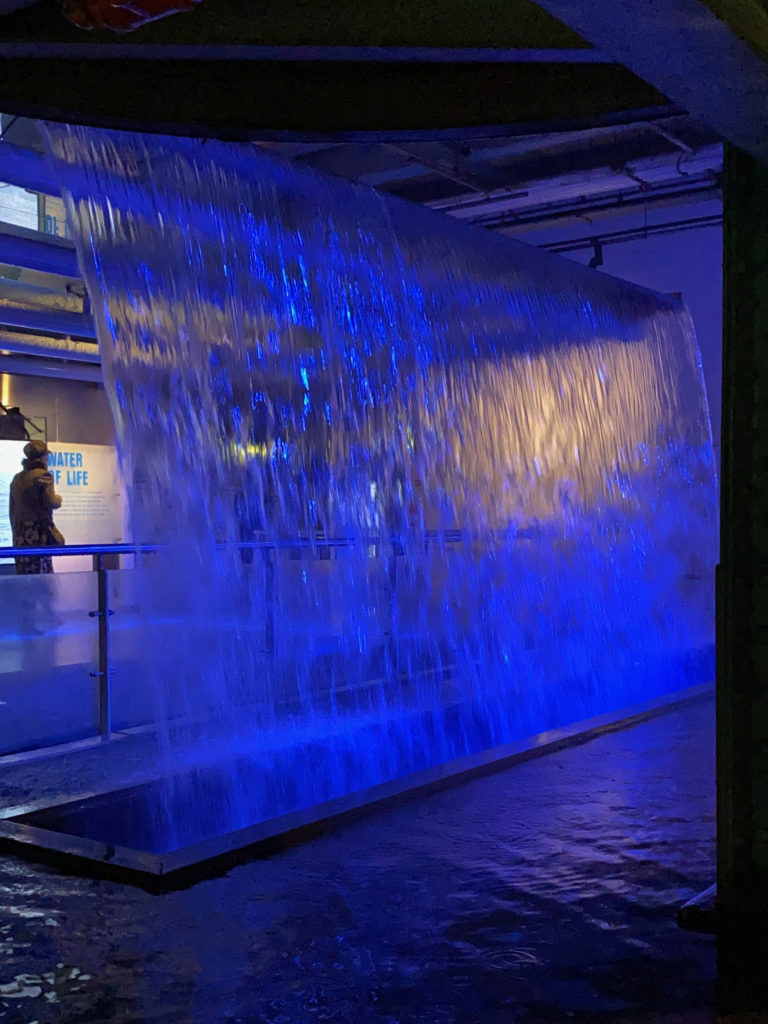
Much like the Heineken Experience in Amsterdam, the Guinness Storehouse is an attraction all about history, brewing, and the company brand. I explored the lower levels of the warehouse, where I learned about Guinness’s four main ingredients: water, hops, barley, and yeast. There are hands-on displays representing each of these ingredients. Further along, I learned about the history of the beer and its creator: Arthur Guinness. Our group also learned the proper way to taste the stout. Instead of sipping the nitrogen foam, which gives the drink a bitter taste, I learned to properly take small gulps of the stout that sits below the foam. I began to enjoy the taste, which is bitter but smooth and refreshing at the same time.
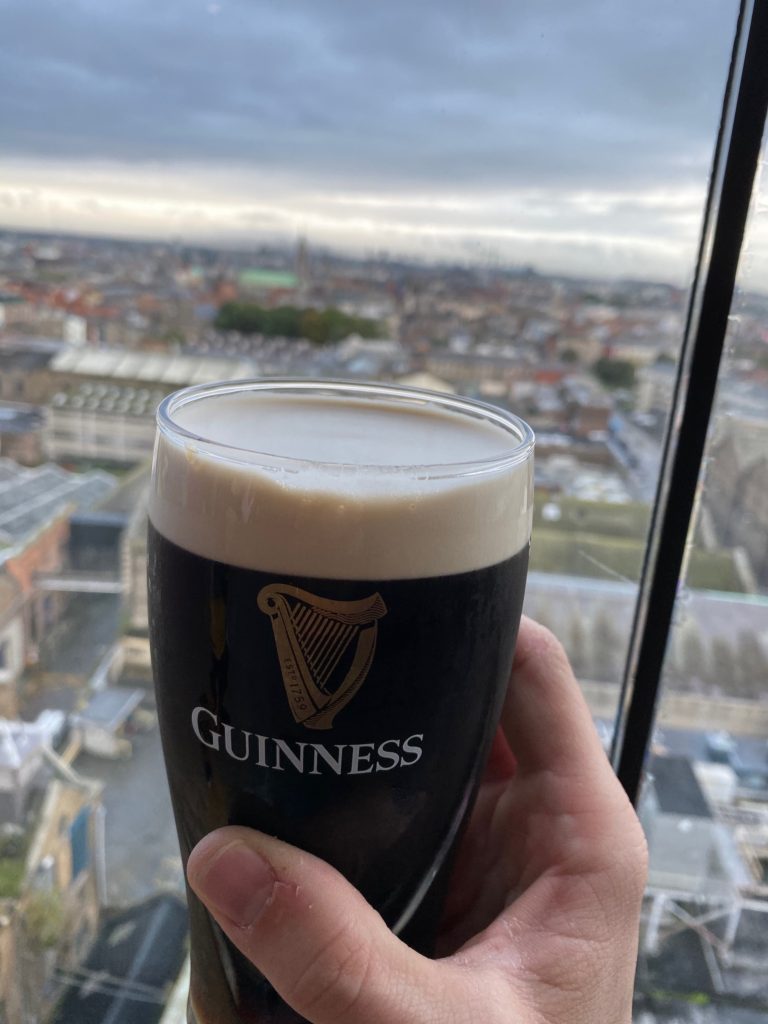
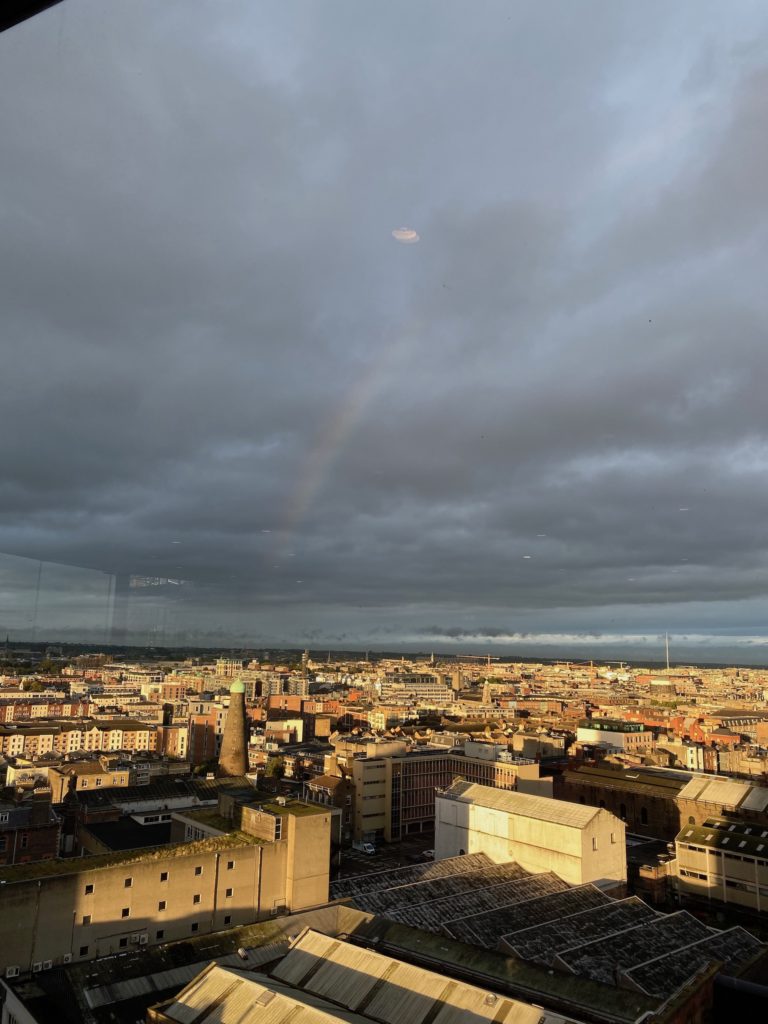
The remaining floors include areas where visitors can pour their own pints and other experiences that cost extra. In general, while the Guinness Storehouse is fun to visit and full of history, I enjoyed the Heineken Experience a bit better. In that brewery, I got to pass by the gold-colored vats and explore more exhibits related to Heineken’s brand. However, the Irish brewery has the best bar out of the two. At the top floor Gravity Bar, my friends and I each received our complimentary pint of Guinness. We
Dublin’s Pubs
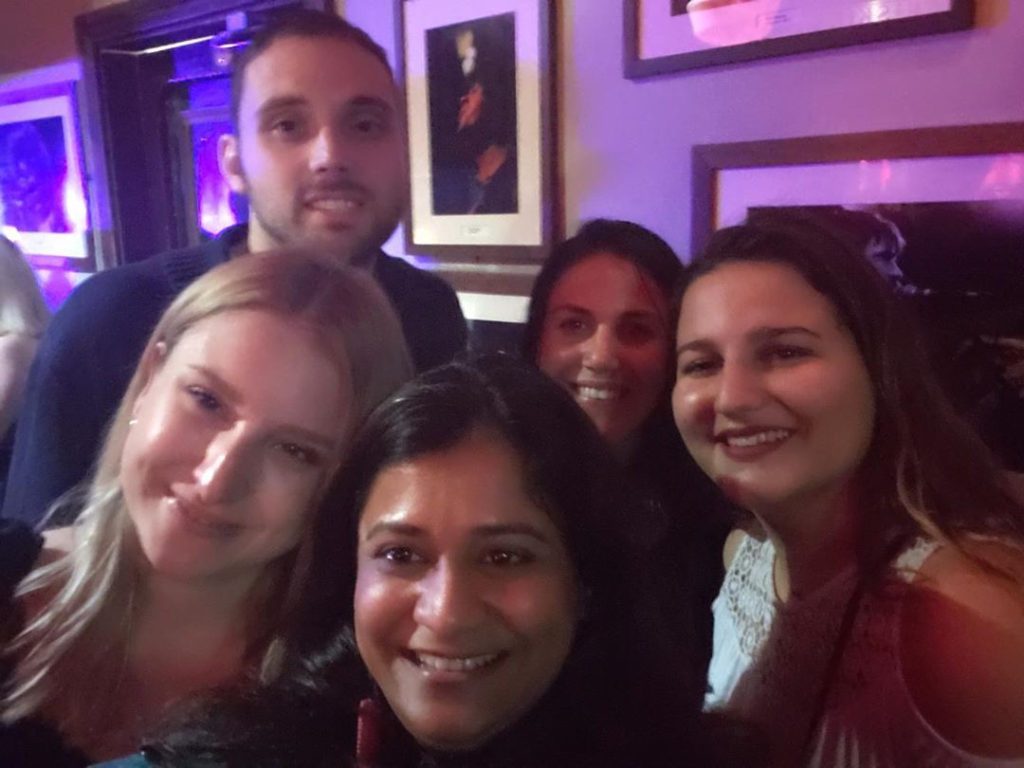
Dublin is a city filled with historic sites, a strong cultural pride, and some of the most vibrant nightlife I have encountered in Europe.

Hi Samuel,
Happy Hanukah!
Are you settled into an apartment ?
Have you had to take a job ?
Anyone in your family planning a visit to Australia to catch up with you?
Veronica is home for 3 1/2 weeks, its good to have her home!
Actually sold the Marbkehead house bc of multiple issues, $ pit and the people and town are not my cup of tea!
In an apartment in Belmont until I find a condo somewhere in the Boston area!
We usually go to Maine for Christmas but my sister came here last week. So we will stay here…
Good to be back; my church, friends etc .
Wishing you a very safe, healthy and happy 2020!
🎉🎊Nancy
Hi Nancy,
Merry Christmas to you! I am currently living at a hostel that caters well to long term guests. I have found a job at a bar to stay financially afloat while I travel and work on my blog. I have already toured a lot of the Melbourne area and even made it to Sydney as well. I have a lot of great travel plans for 2020! Best of luck with the condo search.